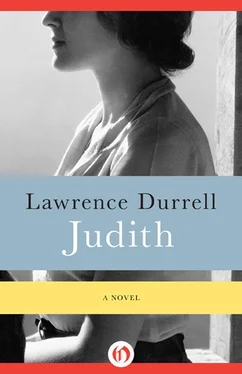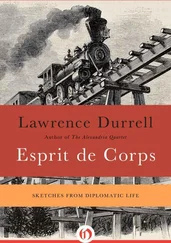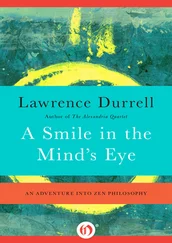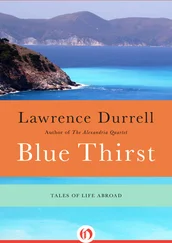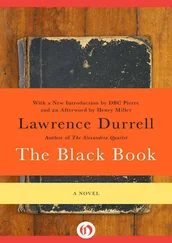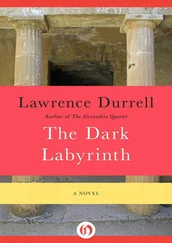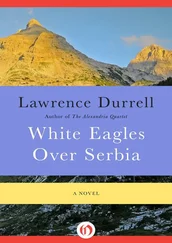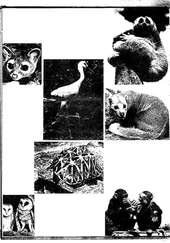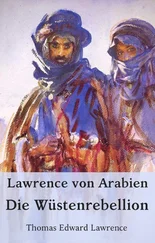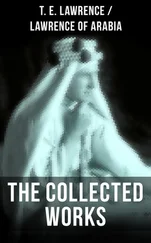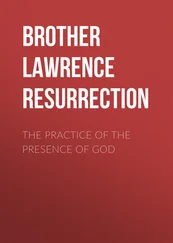Judith is an adventure story which is both romantic and tragic, embracing twin love affairs, and it is also a political drama of considerable poignancy which contains resonances even for the geopolitics of today.
This Introduction sets the scene in 1940s Palestine, on the eve of British withdrawal from the League of Nations Mandate (under which it administered Palestine from 1922 to 1948), with the impending invasion of the newly created state of Israel by its Arab neighbours. It describes the genesis of the novel, and the many elements in Lawrence Durrell’s mind as he was writing it, as well as explaining the discrepancies between the novel and the film of Judith , released by Paramount Pictures in 1966.
The Genesis of Judith
Following the appearance in 1957 of Justine , the first volume of The Alexandria Quartet , and the republication of the Quartet as a single volume in 1962, Lawrence Durrell rapidly became one of the most celebrated and controversial novelists not only in the English-speaking world but also throughout Europe, thanks to translations of the Quartet into French and German. 1On the strength of this acclaim and notoriety, Durrell was approached in 1960 by Twentieth Century — Fox to write a screenplay for a film about Cleopatra, on which he worked throughout that year and 1961, although he eventually withdrew from that project, and is not named in the film credits.
Then, in September 1962, he was in Israel, researching the background for another film, Judith , which would feature Sophia Loren in the title role. Little is known of the circumstances in which the film’s producer, Kurt Unger, commissioned the script from Durrell for Paramount Pictures; their correspondence appears to have been lost (it does not exist in either of the major Durrell archives) so that, as in the case of Cleopatra , we cannot establish precisely Durrell’s reasons for withdrawing from the film project, except to say that he was dissatisfied with the changes in the storyline made by subsequent writers. 2
Durrell worked on the first draft of Judith in late 1962 and early 1963, before meeting Sophia Loren. ‘A sweet creature, great dignity and style’, he recorded. 3Although he lost interest in the film studio’s revisions to his storyline, he went so far, in August 1964, as to visit Israel again during the shoot, where he and Loren made a short travelogue for CBS Television. ‘I acted her off her pretty little feet’, Durrell wrote. 4Given the nature of the political and paramilitary context of Judith, it is worth noting that Moshe Dayan, who, as Israel’s Minister of Defence, facilitated the CBS feature, had in 1939 been imprisoned by the British for his part in illegal arms importations by the Haganah (see below).
As with so many of Durrell’s finished works, Judith began as a sketch, the substance and detail of which would be amplified and enhanced as the project developed. After his preliminary reconnaissance in Israel, Durrell wrote to a friend, ‘Just finished tracing the border without anything to boast about’. 5As I discuss below, this was typical of his method of constructing a story, prior to elevating it from a basic idea to a higher level of literature.
In the first draft of Judith, the central character, Judith Roth, is a distinguished scientist in her own right, who has been ‘sprung’ from Germany by the Zionists, in order to work on papers by her late father, a Nobel Laureate physicist. Loren objected to the characterisation, telling Durrell ‘I am not an intellectual’, asking instead if Judith could be portrayed as a simple ‘woman of the people, not a doctor type’. 6As a result, Durrell completely rewrote the story, making Judith into a refugee/survivor of the concentration camps who has been married to a Nazi Colonel, Günther Schiller. Schiller is now aiding the Arab preparation for the impending attack on the new-born state of Israel.
It is significant, from the point of view of this publication of Judith , that Durrell approached the storyline and the text in a quite different manner from that of Cleopatra . The extant versions by Durrell of Cleopatra are written in the conventional screenplay format: ‘stage’ directions describing atmosphere and movement, followed by dialogue:
Open slowly on the dark town: palm trees, shadows, a waning moon. The camera enters a room in the palace through curtains stirred by the dawn wind, moves across the strange arabesques of tessellated floors towards a huge bed of fantastic design.
7
The text of Judith , by contrast, is written descriptively, and, while the dialogue is dominant, it is integrated into the narrative in a novelistic style. In the absence of any full treatment for the scenario of Judith , we can assume that, while, in the scenario for Cleopatra , Durrell was suggesting the way the director might use the camera’s eye, in Judith he was employing the eye of the reader to achieve his effect.
As a result — it seems — of Loren’s intervention, Durrell had, by the end of 1963, written two versions of Judith , the second replacing Judith the scientist with Judith the victimised mother in search of her child by Günther Schiller. A copy of the second version is held in the archives of Paramount Pictures, and it is presumably from this text that the later scripts were derived. The Durrell archive at Southern Illinois University also contains a document labelled ‘Judith. Palestine 1947’, indicating that Durrell was actively involved in the early stages of the film treatment(s), with perceptive remarks as to the political situation, such as the following:
Jerusalem: The holy city is like a symbol of the Palestinian political situation. The Arab and Jewish community sharing the town, each believing that it will be liberated in the near future for its own people. The Jews have always considered Jerusalem as their capital but they know that the Jordanian Arabs will try in every way to take this city from them.
Durrell includes a note at the end of this document:
We must keep in mind from the very beginning of the story the need of creating a sequence to show the threat hanging over the future of the emerging country. The threat, as will be made clear in the end, is the surrounding Arab States which are opposed to the creation of an independent Jewish state.
8
The film of Judith , directed by Daniel Mann, starred Sophia Loren in the title role, with Peter Finch as Aaron Stein and Jack Hawkins as Major Lawton. 9It is significant that Paramount succeeded in securing the services of both J. P. Miller and John Michael Hayes as screenwriters. Miller, who was principally a playwright, won an Emmy nomination for Days of Wine and Roses (1958). He worked on five versions of the script for Judith between 1 March and 9 July 1964. Hayes had previously worked with Alfred Hitchcock, one of his most notable scripts being Rear Window (1953), for which he received an Oscar nomination, followed by To Catch a Thief, The Trouble with Harry and The Man Who Knew Too Much . He then went on to earn a second Oscar nomination for his adaptation of Peyton Place . Hayes took over the script from Miller on 1 August 1964 and continued with it (another five versions) until 12 March 1965.
A curious anomaly is the fact that the story was serialised (two months after the release of the film) in Woman’s Own magazine as ‘The Epic Story of One Woman’s Torment’, but differs in several details from the episodes in the film (and the film contains elements that are not included in the story). 10
Читать дальше
